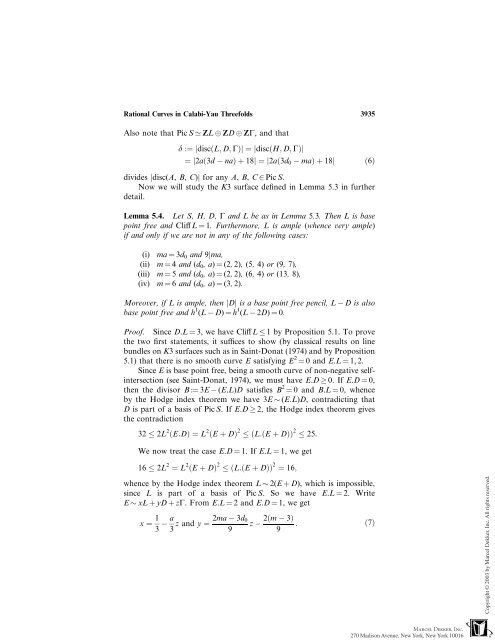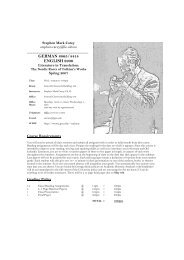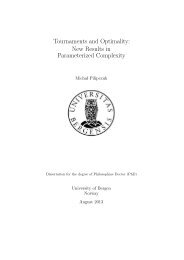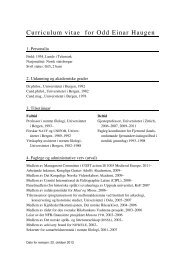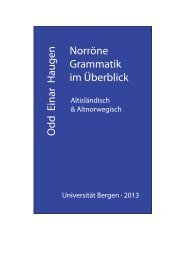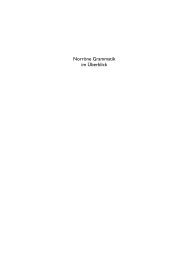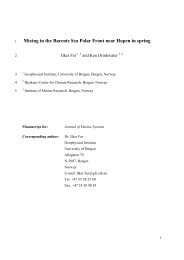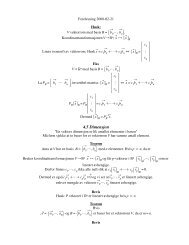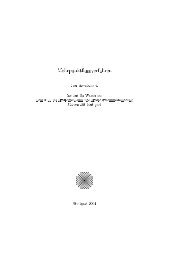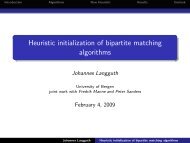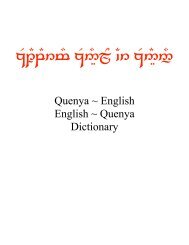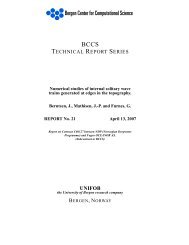Rational Curves in Calabi-Yau Threefolds
Rational Curves in Calabi-Yau Threefolds
Rational Curves in Calabi-Yau Threefolds
You also want an ePaper? Increase the reach of your titles
YUMPU automatically turns print PDFs into web optimized ePapers that Google loves.
<strong>Rational</strong> <strong>Curves</strong> <strong>in</strong> <strong>Calabi</strong>-<strong>Yau</strong> <strong>Threefolds</strong> 3935<br />
Also note that Pic S ’ ZL ZD ZG, and that<br />
d :¼ jdiscðL; D; GÞj ¼ jdiscðH; D; GÞj<br />
¼j2að3d naÞþ18j ¼j2að3d0 maÞþ18j ð6Þ<br />
divides jdisc(A, B, C)j for any A, B, C 2 Pic S.<br />
Now we will study the K3 surface def<strong>in</strong>ed <strong>in</strong> Lemma 5.3 <strong>in</strong> further<br />
detail.<br />
Lemma 5.4. Let S, H, D, G and L be as <strong>in</strong> Lemma 5.3. Then L is base<br />
po<strong>in</strong>t free and Cliff L ¼ 1. Furthermore, L is ample (whence very ample)<br />
if and only if we are not <strong>in</strong> any of the follow<strong>in</strong>g cases:<br />
(i) ma ¼ 3d 0 and 9jma,<br />
(ii) m ¼ 4 and (d0, a)¼ (2, 2), (5, 4) or (9, 7),<br />
(iii) m ¼ 5 and (d0, a)¼ (2, 2), (6, 4) or (13, 8),<br />
(iv) m ¼ 6 and (d0, a)¼ (3, 2).<br />
Moreover, if L is ample, then jDj is a base po<strong>in</strong>t free pencil, L D is also<br />
base po<strong>in</strong>t free and h 1 (L D) ¼ h 1 (L 2D) ¼ 0.<br />
Proof. S<strong>in</strong>ce D.L ¼ 3, we have Cliff L 1 by Proposition 5.1. To prove<br />
the two first statements, it suffices to show (by classical results on l<strong>in</strong>e<br />
bundles on K3 surfaces such as <strong>in</strong> Sa<strong>in</strong>t-Donat (1974) and by Proposition<br />
5.1) that there is no smooth curve E satisfy<strong>in</strong>g E 2 ¼ 0 and E.L ¼ 1, 2.<br />
S<strong>in</strong>ce E is base po<strong>in</strong>t free, be<strong>in</strong>g a smooth curve of non-negative self<strong>in</strong>tersection<br />
(see Sa<strong>in</strong>t-Donat, 1974), we must have E.D 0. If E.D ¼ 0,<br />
then the divisor B :¼ 3E (E.L)D satisfies B 2 ¼ 0 and B.L ¼ 0, whence<br />
by the Hodge <strong>in</strong>dex theorem we have 3E (E.L)D, contradict<strong>in</strong>g that<br />
D is part of a basis of Pic S. IfE.D 2, the Hodge <strong>in</strong>dex theorem gives<br />
the contradiction<br />
32 2L 2 ðE:DÞ ¼L 2 ðE þ DÞ 2<br />
ðL:ðE þ DÞÞ 2<br />
We now treat the case E.D ¼ 1. If E.L ¼ 1, we get<br />
16 2L 2 ¼ L 2 ðE þ DÞ 2<br />
ðL:ðE þ DÞÞ 2 ¼ 16;<br />
whence by the Hodge <strong>in</strong>dex theorem L 2(E þ D), which is impossible,<br />
s<strong>in</strong>ce L is part of a basis of Pic S. So we have E.L ¼ 2. Write<br />
E xL þ yD þ zG. From E.L ¼ 2andE.D ¼ 1, we get<br />
x ¼ 1<br />
3<br />
a 2ma 3d0<br />
z and y ¼ z<br />
3 9<br />
2ðm 3Þ<br />
:<br />
9<br />
25:<br />
ð7Þ


